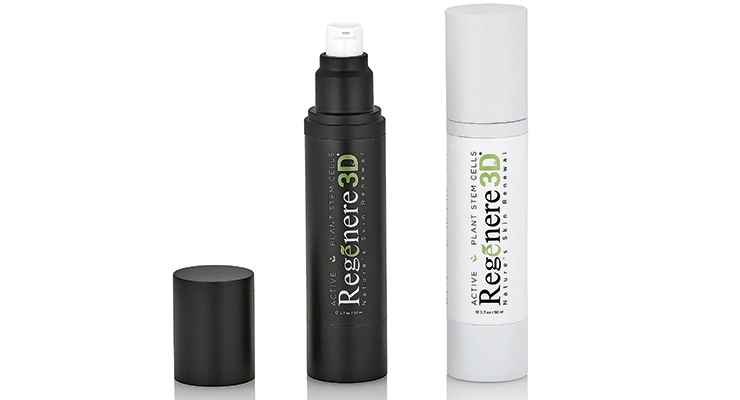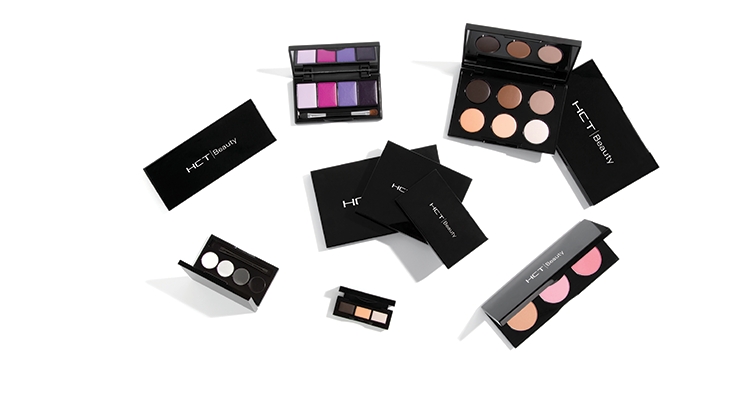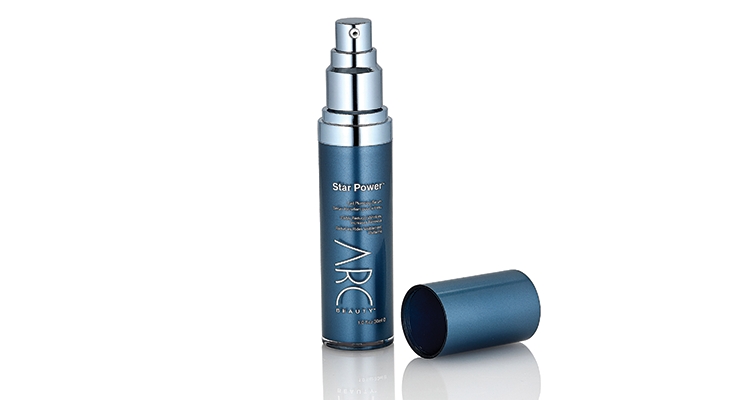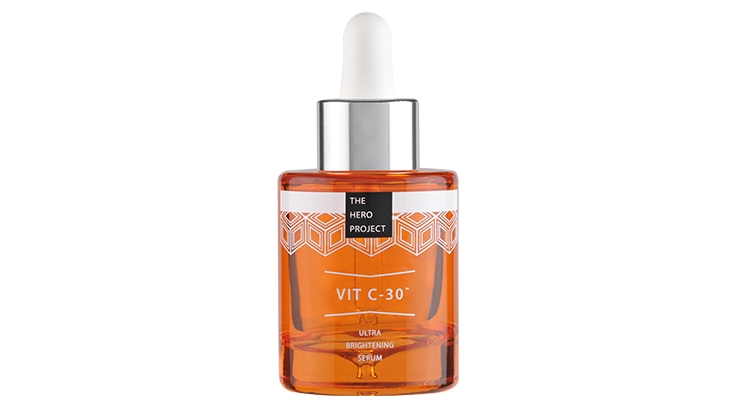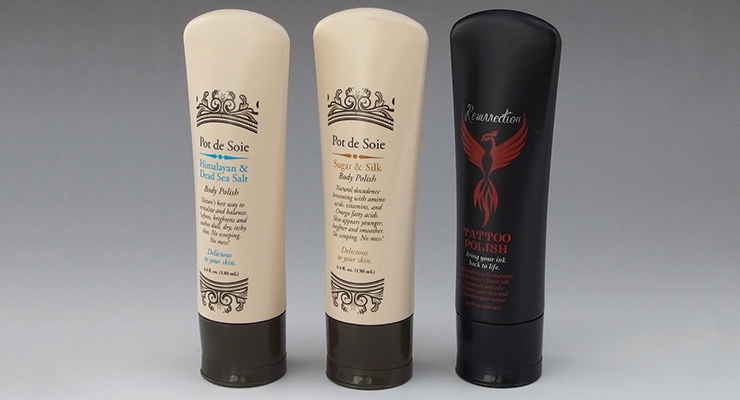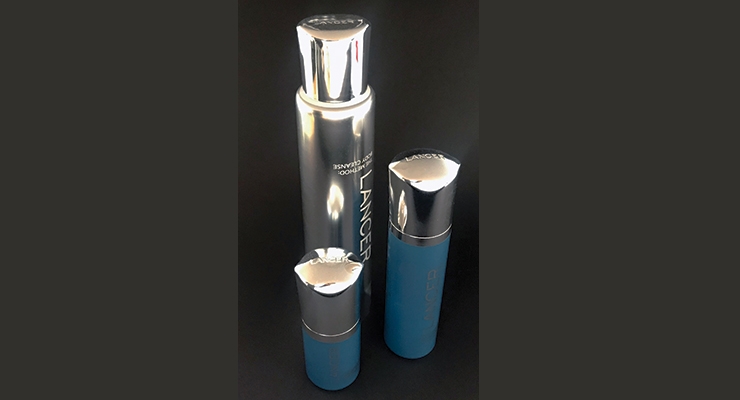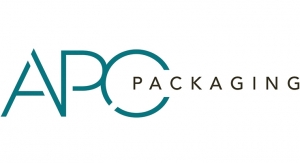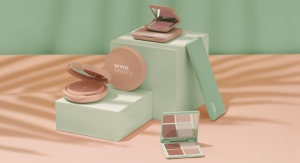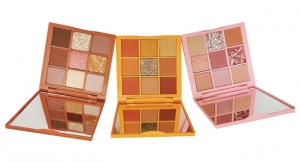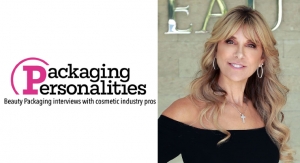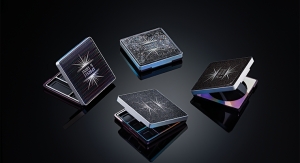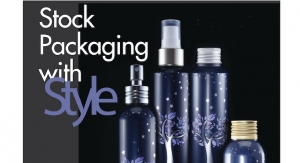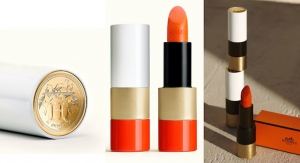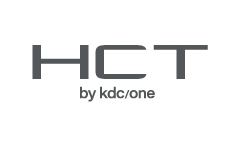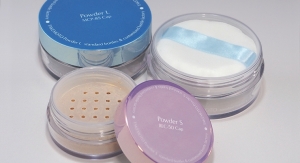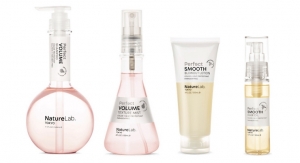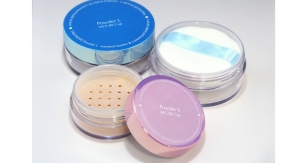Joanna Cosgrove, Contributing Editor01.26.18
Stock packaging is the ultimate utility tool. In comparison to custom-made packaging, in-stock packaging options boast affordability and are ready-made for quick-to-market applications, while offering almost limitless opportunities for brand personalization through componentry, closure and decorating options. Stock package configurations aren’t just for up-and-coming, cash-lean indie brands, they’re a budget-wise option for global brands, too.
“Brands today are very visionary, and want a blank canvas to create their vision,” extolls Anthony DeMarco, executive vice president of sales, HCT Group, East Coast, New York. “Color, finish, texture, artwork, font, are all part of the DNA, and a stock package allows the brands to focus their energies on all of these aspects.”
HCT Group’s large library of stock components is constantly benefiting from new and inventive finishes and decorative processes such as iridescent, textured, mirrored metallization techniques. “We have some metallized finishes that mimic actual metal; these finishes are so realistic you would not know it is not actual metal by simply looking at the component. And if we weight the part, it is almost impossible to tell the difference,” DeMarco says. “Our award-winning heat and water transfer decos are constantly pushing boundaries [and our] 3D printing capabilities give any stock line dimension, pun intended.”
One of HCT’s most versatile and time-tested stock packages is the Bali palette, a simple rectangular container that initially housed eight eyeshadows, but has been creatively repurposed by brands like Bobbi Brown, Laura Mercier, Estée Lauder, Amway and Laura Geller for cheek colors, bronzers and baked formulations, too. “Over the years, this compact has become the most widely used package within our stock range,” says DeMarco. “There are at least 10 different inserts and five footprints of this design [and] each client has made it their own through specific colors and decoration unique to their brand.”
“Stock packaging options offer an incredible advantage in speed to market,” comments Mike Warford, director of sales, ABA Packaging Corp., Holtsville NY, which offers a large variety of stock packaging products and all of the common and versatile decorating techniques. “In most cases, we can have decorated stock items ready for shipment in 4-6 weeks and factory-stocked items available in 6-8 weeks.”
On-Site Convenience
Rosa Porras, marketing and communications manager, Virospack, Spain, feels that product personalization and differentiation is more than just a desire of brands, it has become a necessity because the globalization and homogenization of products has compelled consumers to seek out products that are unique.
“In this search for differentiation, brands must communicate differently, and packaging is a valuable element to do so,” says Porras. “They need a personal, personalized presentation, but not all brands have the resources to invest in the development and molds of their own specific packaging.”
At APC Packaging, Fort Lauderdale, FL, a large stock inventory, immediate availability, competitive price and one-stop logistic services are just a few of the topline advantages of stock packaging. “We carefully select our in-stock items for their compatibility, style and quality to ensure that they meet a variety of customer needs while remaining immediately available in warehouse,” says Marianna Cilauro, vice president of business development for APC Packaging. “The colors and accents of our stock items were chosen for their matching capabilities in order to help maximize clients’ packaging options.”
Two of APC Packaging’s recent projects are examples of how the company creates customized products with its in-stock packaging implements.
“For the Regenere 3D bottle, we used our stock JS airless bottle, applied outer spray to give a matte finish to the collar, over cap, body and footer, and combined with two-color silk screen printing,” says Robert Bulla, director of engineering and innovation. “Star Power required an airless bottle. Our stock JSY bottle has been selected, but it has the dip tube, so we changed its function and made it into an airless bottle.
“We anodized the aluminum pump and vacuum metallized the collar to match both in metallic blue,” he says. “We applied inner spray to the bottle and outer spray to the over cap to give it a metallic look.”
For Virospack, whose forte is dropper packaging, fully customizable droppers paired with variations of the company’s standard componentry give brands the opportunity to tinker with plenty of personalized possibilities to find their perfect fit. “The options are endless and [afford brands the opportunity] to play with designs of higher and/or wide caps, metal shell, painted or metallic, combined with painted bulbs,” says Porras, who adds that the company additionally offers in-house silk screening, hot stamping, metallizing and texture finishing and, for the vials themselves, the company offers degrees of opacity, translucency, iridescence, pearling and glazing. “We produce all components and decorate them following the desires of brands and offering customization to them, but brands don´t need to invest in molds or developments. We have a wide range of standard components—the only thing the brand needs to do is to choose between all our standard options for a final customized-result pack.”
She points to the package utilized by Hero Project as a good example of a customized full pack with standard references and finishes. Two products are presented in Virospack dispenser dropper packs composed of painted, 30ml molded glass bottles decorated with screen printing and a customized cosmetic or push button dropper. They feature silver metal caps and “last drop finish” to ensure complete restitution of the formula. Both droppers, classic and push button, are compatible with the 20/410 vial neck. “We have many dropper solutions that are compatible with a multitude of different bottle necks and we offer dropper alternatives for all bottles in the cosmetics market,” says Porras, noting that dropper choice is all about aesthetics and the image that the brand wants to convey.
“The classic dropper has a more cosmeceutical image and the push button is a bit more sophisticated,” she says. “From a functional point of view, they are similar since the push button dropper also contains a bulb in its interior, by which the mechanism is similar in both cases.”
Global Advantages
Takemoto Packaging Inc. is headquartered in Japan and counts some 3,000 stock molds in Japan and another 1,500 in its China facility. When Healthy Skin LLC sought Takemoto’s expertise to create two customized stock looks, Takemoto tapped into its global reach to make sure all of the personal care brand’s packaging wishes were satisfied.
For its Resurrection Tattoo Polish, an All Natural Body Polish designed to make tattoos appear brighter and revive the appearance of dull or fading tattoos, and its Pot de Soie brand Himalayan & Dead Sea Salt Body Polish and Sugar & Silk Body Polish range, Healthy Skin chose custom colored, recyclable, HDPE+LDPE tottles in 130ml capacities for easy squeezability, topped with custom colored flip top caps in PP with an 8mm orifice. The bottles were sourced in China, while the caps were made in Japan.
Silk screen decoration was accomplished in eight passes but as Atsko Fukada, Takemoto’s New York-based senior director, explains, the design uses only two colors on the front and back panels, but the designs are spread corner to corner on curved and concave surfaces. “To reduce environmental impact and cost, the customer wanted to use the whole surface area to inform her customers and develop her brand without the use of secondary packaging and inserts,” she says. “In order for her vision to be achieved, we were able to separate the two colors into eight passes and print each product eight times.”
To ensure perfection, Takemoto created several samples to match colors with her image. “In particular, a red (a color with reduced coverage) silk screening pass on the black custom color bottle was a challenge to achieve,” Fukado says. “We worked over several weeks, sent printed samples to the customer, received comments from her and revised the samples accordingly. Although the process took time, the color she envisioned was achieved.
“If this were done in either Japan or China (where our factories are located), customers could have come to work with us on site,” she continues. “However, my customer was in the U.S., so instead, we had a number of meetings over the phone and thoroughly discussed the issues. My customer, her designer and I worked together and were able to achieve the desired results through the process of sharing requirements and technical issues.”
Extra processes were required to ensure that accurate colors and orifice sizes matched, because the bottles and caps were made in different countries. “Each country uses local suppliers of master batches and materials, so slight differences can occur,” Fukada says, “however, our teams in China and Japan worked together closely to match the colors of the products with different production locations.”
To help its customers accurately envision its stock package creations, Takemoto offers a unique 3D visualizer on its website to help its brand customers realistically visualize their packages so they can create them no matter where they or their colleagues are located around the world.
“This 3D visualizer can be a good ‘sidekick’ to help customers build and rebuild their own lines until they are visually satisfied, [while helping them] to visualize and share their images with their colleagues and customers,” Fukada says. “We offer several different sizes and functionality within the series, which helps our customers to create cohesive lines, too.”
What’s more, the company is prepping to unveil its new Standout Deco Lab in Tokyo in the third quarter of 2018. As a newly constructed building adjacent to Takemoto’s showroom, the Lab will feature a gallery of actual decorated market samples that have made use of customized stock packaging, enabling customers to use the products as reference for their own package creations.
Regardless of where in the world a brand’s stock packaging is sourced and customized, Curt Altmann, director of marketing, Yonwoo/PKG, says good stock componentry should flexibly accommodate everything the brand hopes to achieve with its packaging.
Metallizing and spraying have become two of Yonwoo/PKG’s most versatile decorating techniques, with not only infinite color choice, but variations in opacity, texture and multicolor blending. From there, printing and stamping in many colors and textures completes the look. Beyond deco, customization can also be accomplished with relatively inexpensive, bespoke over caps. “The entry for such customization is minimal in tooling expense and can even become more cost effective based on the marketer’s quantity needs,” says Altmann. “Many larger brands we work with will invest in higher capacity tooling of some of our standard packaging to meet their global needs. Often when they do this, they will add styling touches to align the package more to the brand.”
Yonwoo/PKG worked with Lancer Skincare in this vein, tying together some of the company’s standard jars, airless bottles and tubes with custom designed caps in metallized ABS to deliver a strong, unified brand look.
“Stock packaging is usually designed to have the greatest deco areas possible and be made to take as many secondary operations as possible, everything from metallizing and spraying to all forms of printing like offset and silk screen to labeling and appliques,” Altmann says. “Good stock packaging is usually rather minimalist in design so that the marketer’s brand look can really dominate. It truly is the blank canvas with which to express color, texture, reflectivity and graphics.”
According to a recent market forecast from UK-based Smithers Pira, package customization will play a significant role in what the firm found to be the 10 most substantial forces set to impact the packaging industry over the next decade.
Ensuring future brand success will hinge on capitalizing on emergent technologies and responding to new brand and consumer demands within a rapidly evolving retail landscape.
Report author Simon Ford says that with respect to the drive to customization led by a new generation of digital print equipment, “Consumer responsiveness to one-off and seasonal product editions can be a strong factor in increasing sales, as has been well documented in the drinks industry: the ‘Share a Coke’ campaign increased sales by just over 2% in the first year and was the spark for millions of social media hits and texts and photos,” he says. “The idea is to provide consumers with a customized, personalized experience, or at least the perception of one.”
According to the firm’s findings, the top 10 packaging trends set to shape the industry will be:
• Greater connectivity with consumers – with packaging forming the physical bridge to online interaction
• Packaging premiumization
• Meeting tighter brand corporate sustainability targets
• Designing packs for e-commerce
• Adjusting transit packaging to dimension (DIM) weighting
• Integrating the latest generation of sustainable packaging materials
• Customization and co-creation of packaging
• Designing packs for optimal in-store location
• Adapting global brand packaging for transition market opportunities
• Engaging consumers in anti-counterfeiting
These trends, according to the report, will both complement and compete with each other across the study time period.
“Brands today are very visionary, and want a blank canvas to create their vision,” extolls Anthony DeMarco, executive vice president of sales, HCT Group, East Coast, New York. “Color, finish, texture, artwork, font, are all part of the DNA, and a stock package allows the brands to focus their energies on all of these aspects.”
HCT Group’s large library of stock components is constantly benefiting from new and inventive finishes and decorative processes such as iridescent, textured, mirrored metallization techniques. “We have some metallized finishes that mimic actual metal; these finishes are so realistic you would not know it is not actual metal by simply looking at the component. And if we weight the part, it is almost impossible to tell the difference,” DeMarco says. “Our award-winning heat and water transfer decos are constantly pushing boundaries [and our] 3D printing capabilities give any stock line dimension, pun intended.”
One of HCT’s most versatile and time-tested stock packages is the Bali palette, a simple rectangular container that initially housed eight eyeshadows, but has been creatively repurposed by brands like Bobbi Brown, Laura Mercier, Estée Lauder, Amway and Laura Geller for cheek colors, bronzers and baked formulations, too. “Over the years, this compact has become the most widely used package within our stock range,” says DeMarco. “There are at least 10 different inserts and five footprints of this design [and] each client has made it their own through specific colors and decoration unique to their brand.”
“Stock packaging options offer an incredible advantage in speed to market,” comments Mike Warford, director of sales, ABA Packaging Corp., Holtsville NY, which offers a large variety of stock packaging products and all of the common and versatile decorating techniques. “In most cases, we can have decorated stock items ready for shipment in 4-6 weeks and factory-stocked items available in 6-8 weeks.”
On-Site Convenience
Rosa Porras, marketing and communications manager, Virospack, Spain, feels that product personalization and differentiation is more than just a desire of brands, it has become a necessity because the globalization and homogenization of products has compelled consumers to seek out products that are unique.
“In this search for differentiation, brands must communicate differently, and packaging is a valuable element to do so,” says Porras. “They need a personal, personalized presentation, but not all brands have the resources to invest in the development and molds of their own specific packaging.”
At APC Packaging, Fort Lauderdale, FL, a large stock inventory, immediate availability, competitive price and one-stop logistic services are just a few of the topline advantages of stock packaging. “We carefully select our in-stock items for their compatibility, style and quality to ensure that they meet a variety of customer needs while remaining immediately available in warehouse,” says Marianna Cilauro, vice president of business development for APC Packaging. “The colors and accents of our stock items were chosen for their matching capabilities in order to help maximize clients’ packaging options.”
Two of APC Packaging’s recent projects are examples of how the company creates customized products with its in-stock packaging implements.
“For the Regenere 3D bottle, we used our stock JS airless bottle, applied outer spray to give a matte finish to the collar, over cap, body and footer, and combined with two-color silk screen printing,” says Robert Bulla, director of engineering and innovation. “Star Power required an airless bottle. Our stock JSY bottle has been selected, but it has the dip tube, so we changed its function and made it into an airless bottle.
“We anodized the aluminum pump and vacuum metallized the collar to match both in metallic blue,” he says. “We applied inner spray to the bottle and outer spray to the over cap to give it a metallic look.”
For Virospack, whose forte is dropper packaging, fully customizable droppers paired with variations of the company’s standard componentry give brands the opportunity to tinker with plenty of personalized possibilities to find their perfect fit. “The options are endless and [afford brands the opportunity] to play with designs of higher and/or wide caps, metal shell, painted or metallic, combined with painted bulbs,” says Porras, who adds that the company additionally offers in-house silk screening, hot stamping, metallizing and texture finishing and, for the vials themselves, the company offers degrees of opacity, translucency, iridescence, pearling and glazing. “We produce all components and decorate them following the desires of brands and offering customization to them, but brands don´t need to invest in molds or developments. We have a wide range of standard components—the only thing the brand needs to do is to choose between all our standard options for a final customized-result pack.”
She points to the package utilized by Hero Project as a good example of a customized full pack with standard references and finishes. Two products are presented in Virospack dispenser dropper packs composed of painted, 30ml molded glass bottles decorated with screen printing and a customized cosmetic or push button dropper. They feature silver metal caps and “last drop finish” to ensure complete restitution of the formula. Both droppers, classic and push button, are compatible with the 20/410 vial neck. “We have many dropper solutions that are compatible with a multitude of different bottle necks and we offer dropper alternatives for all bottles in the cosmetics market,” says Porras, noting that dropper choice is all about aesthetics and the image that the brand wants to convey.
“The classic dropper has a more cosmeceutical image and the push button is a bit more sophisticated,” she says. “From a functional point of view, they are similar since the push button dropper also contains a bulb in its interior, by which the mechanism is similar in both cases.”
Global Advantages
Takemoto Packaging Inc. is headquartered in Japan and counts some 3,000 stock molds in Japan and another 1,500 in its China facility. When Healthy Skin LLC sought Takemoto’s expertise to create two customized stock looks, Takemoto tapped into its global reach to make sure all of the personal care brand’s packaging wishes were satisfied.
For its Resurrection Tattoo Polish, an All Natural Body Polish designed to make tattoos appear brighter and revive the appearance of dull or fading tattoos, and its Pot de Soie brand Himalayan & Dead Sea Salt Body Polish and Sugar & Silk Body Polish range, Healthy Skin chose custom colored, recyclable, HDPE+LDPE tottles in 130ml capacities for easy squeezability, topped with custom colored flip top caps in PP with an 8mm orifice. The bottles were sourced in China, while the caps were made in Japan.
Silk screen decoration was accomplished in eight passes but as Atsko Fukada, Takemoto’s New York-based senior director, explains, the design uses only two colors on the front and back panels, but the designs are spread corner to corner on curved and concave surfaces. “To reduce environmental impact and cost, the customer wanted to use the whole surface area to inform her customers and develop her brand without the use of secondary packaging and inserts,” she says. “In order for her vision to be achieved, we were able to separate the two colors into eight passes and print each product eight times.”
To ensure perfection, Takemoto created several samples to match colors with her image. “In particular, a red (a color with reduced coverage) silk screening pass on the black custom color bottle was a challenge to achieve,” Fukado says. “We worked over several weeks, sent printed samples to the customer, received comments from her and revised the samples accordingly. Although the process took time, the color she envisioned was achieved.
“If this were done in either Japan or China (where our factories are located), customers could have come to work with us on site,” she continues. “However, my customer was in the U.S., so instead, we had a number of meetings over the phone and thoroughly discussed the issues. My customer, her designer and I worked together and were able to achieve the desired results through the process of sharing requirements and technical issues.”
Extra processes were required to ensure that accurate colors and orifice sizes matched, because the bottles and caps were made in different countries. “Each country uses local suppliers of master batches and materials, so slight differences can occur,” Fukada says, “however, our teams in China and Japan worked together closely to match the colors of the products with different production locations.”
To help its customers accurately envision its stock package creations, Takemoto offers a unique 3D visualizer on its website to help its brand customers realistically visualize their packages so they can create them no matter where they or their colleagues are located around the world.
“This 3D visualizer can be a good ‘sidekick’ to help customers build and rebuild their own lines until they are visually satisfied, [while helping them] to visualize and share their images with their colleagues and customers,” Fukada says. “We offer several different sizes and functionality within the series, which helps our customers to create cohesive lines, too.”
What’s more, the company is prepping to unveil its new Standout Deco Lab in Tokyo in the third quarter of 2018. As a newly constructed building adjacent to Takemoto’s showroom, the Lab will feature a gallery of actual decorated market samples that have made use of customized stock packaging, enabling customers to use the products as reference for their own package creations.
Regardless of where in the world a brand’s stock packaging is sourced and customized, Curt Altmann, director of marketing, Yonwoo/PKG, says good stock componentry should flexibly accommodate everything the brand hopes to achieve with its packaging.
Metallizing and spraying have become two of Yonwoo/PKG’s most versatile decorating techniques, with not only infinite color choice, but variations in opacity, texture and multicolor blending. From there, printing and stamping in many colors and textures completes the look. Beyond deco, customization can also be accomplished with relatively inexpensive, bespoke over caps. “The entry for such customization is minimal in tooling expense and can even become more cost effective based on the marketer’s quantity needs,” says Altmann. “Many larger brands we work with will invest in higher capacity tooling of some of our standard packaging to meet their global needs. Often when they do this, they will add styling touches to align the package more to the brand.”
Yonwoo/PKG worked with Lancer Skincare in this vein, tying together some of the company’s standard jars, airless bottles and tubes with custom designed caps in metallized ABS to deliver a strong, unified brand look.
“Stock packaging is usually designed to have the greatest deco areas possible and be made to take as many secondary operations as possible, everything from metallizing and spraying to all forms of printing like offset and silk screen to labeling and appliques,” Altmann says. “Good stock packaging is usually rather minimalist in design so that the marketer’s brand look can really dominate. It truly is the blank canvas with which to express color, texture, reflectivity and graphics.”
According to a recent market forecast from UK-based Smithers Pira, package customization will play a significant role in what the firm found to be the 10 most substantial forces set to impact the packaging industry over the next decade.
Ensuring future brand success will hinge on capitalizing on emergent technologies and responding to new brand and consumer demands within a rapidly evolving retail landscape.
Report author Simon Ford says that with respect to the drive to customization led by a new generation of digital print equipment, “Consumer responsiveness to one-off and seasonal product editions can be a strong factor in increasing sales, as has been well documented in the drinks industry: the ‘Share a Coke’ campaign increased sales by just over 2% in the first year and was the spark for millions of social media hits and texts and photos,” he says. “The idea is to provide consumers with a customized, personalized experience, or at least the perception of one.”
According to the firm’s findings, the top 10 packaging trends set to shape the industry will be:
• Greater connectivity with consumers – with packaging forming the physical bridge to online interaction
• Packaging premiumization
• Meeting tighter brand corporate sustainability targets
• Designing packs for e-commerce
• Adjusting transit packaging to dimension (DIM) weighting
• Integrating the latest generation of sustainable packaging materials
• Customization and co-creation of packaging
• Designing packs for optimal in-store location
• Adapting global brand packaging for transition market opportunities
• Engaging consumers in anti-counterfeiting
These trends, according to the report, will both complement and compete with each other across the study time period.

